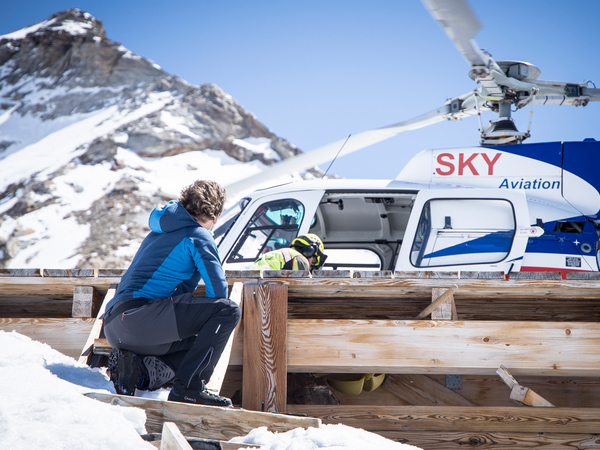After weeks of waiting due to wind gusts and adverse weather conditions, Ice Memory's international scientific mission on Monte Rosa has finally started.
The Monte Rosa massif holds the most studied and important glacial archive in the Alps. In fact, where the Gorner glacier is over 80 meters thick – on Colle Gnifetti, a subpeak of Monte Rosa – there is an archive of information on the environment and climate of the last ten thousand years.
Rising temperatures are endangering this scientific and cultural heritage. The reality of the threat was proven in September 2020, when the Grand Combin glacier was in such bad conditions that the scientists who were attempting to extract an ice core sample could go no deeper than 20 metres, probably due to the presence of water.
For this reason, the Italian-Swiss team of the international project Ice Memory wants to extract an ice core from the ‘cold’ glacier of Monte Rosa as soon as possible. The sample will be sent to an ‘archive’ of the Earth’s mountain glaciers that will be created in Antarctica.
The mission has been organised by the Institute of Polar Sciences (ISP) of the Italian National Research Council and Ca’ Foscari University of Venice, in collaboration with the Swiss Paul Scherrer Institute. It will start on Monday 3 May from Alagna Valsesia (Vercelli), at the foot of Monte Rosa.
The researchers spent two days at the Capanna Gnifetti refuge (3,600m), in order to acclimatise. Now their new base is Capanna Margherita (4,500m), where they will carry out core sampling on the Gorner glacier.
Capanna Margherita
For the duration of the mission, which is expected to last no less than 10 days, scientists will stay at Capanna Margherita – the highest mountain refuge in Europe, built on a rocky peak 128 years ago for the purpose of contributing to scientific research in the field of physiology and, more recently, of climatology and natural science.
The Colle Gnifetti glacier
The Gorner glacier is the second largest glacier in the Alps. With an area of about 40km2, the glacier extends from 2,190m to 4,600m above sea level. In 2017 it was estimated that the volume of the glacier amounted to 4.9km3. Since the mid-1800s, the glacier has lost about 40% of its area, with its front retreating by about 3.3km.
Glaciers like Gorner are increasingly rare in the Alps and this is one of the last chances for scientists to create an “archive” of ice cores that have not yet been corrupted by climate change and that can offer invaluable information on the history of our climate.
The expedition on Monte Rosa is funded by the Italian Ministry of Education, University and Research (with the special supplementary fund for research, FISR) and by the Paul Scherrer Institute.
Learn more about the project here (Italian webpage).
Follow the updates from the researchers on Facebook and Twitter.
These are the members of the team who will participate in the expedition: Margit Schwikowski (Psi), Theo Jenk (team leader, Psi), François Burgay (Psi), Jacopo Gabrieli (Cnr/Ca’ Foscari), Fabrizio de Blasi (Cnr/Ca’ Foscari), Andrea Spolaor (Cnr/Ca’ Foscari), Paolo Conz (mountain guide), Sabine Harbeke (ZHdK, PolARTS project), Riccardo Selvatico (videomaker).
The mission is sponsored by AKU and Karpos and features the collaboration of Comune di Alagna Valsesia, Alagna’s Mountain Guides, Rifugi Monterosa, Monterosa 2000 spa, Camp, ARPA Piemonte, ARPA Valle d'Aosta, Comitato Glaciologico Italiano, Ente di gestione delle aree protette della Valle Sesia, Fondazione Montagna Sicura, the University of Turin, and Einwohnergemein.










